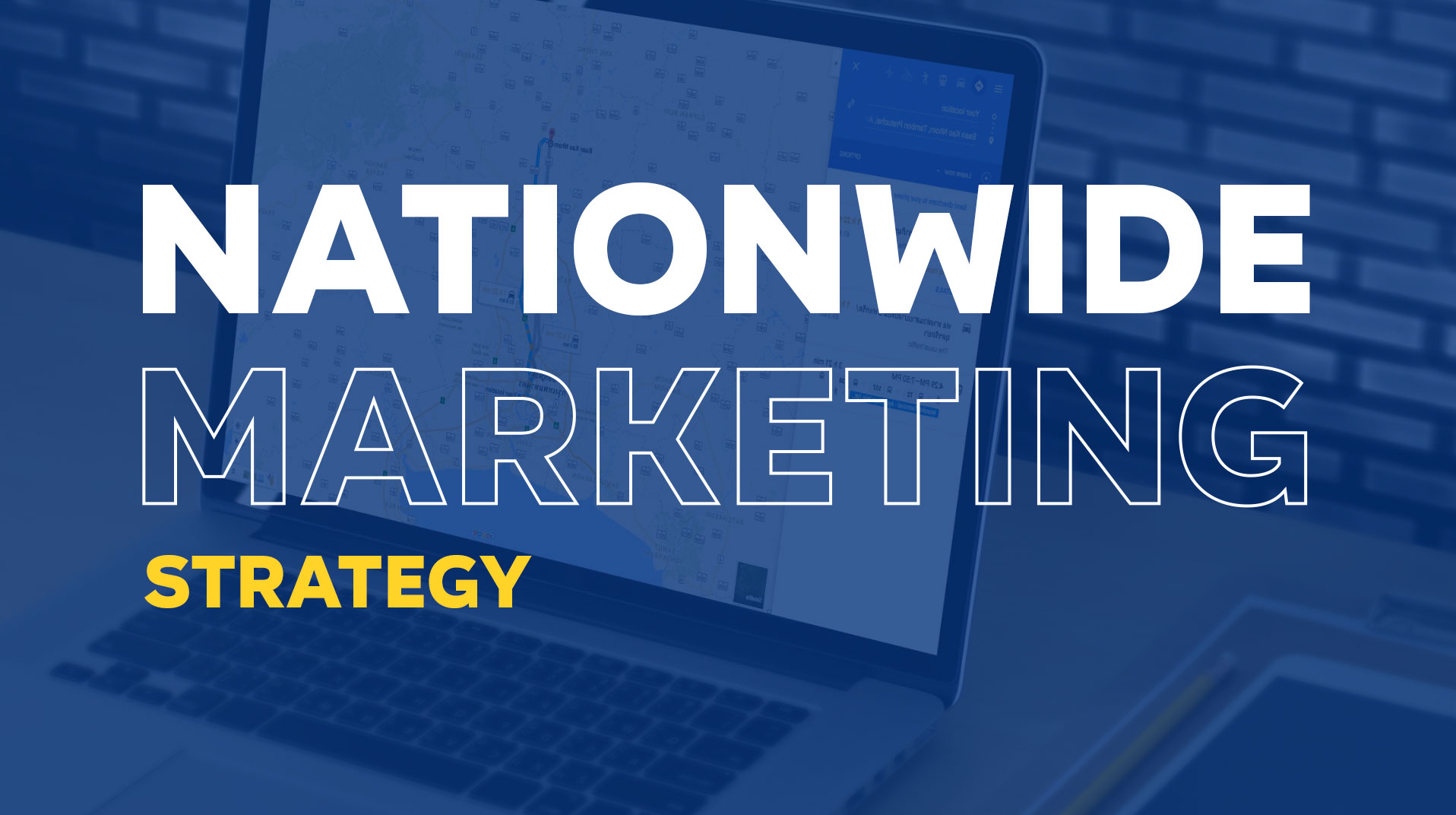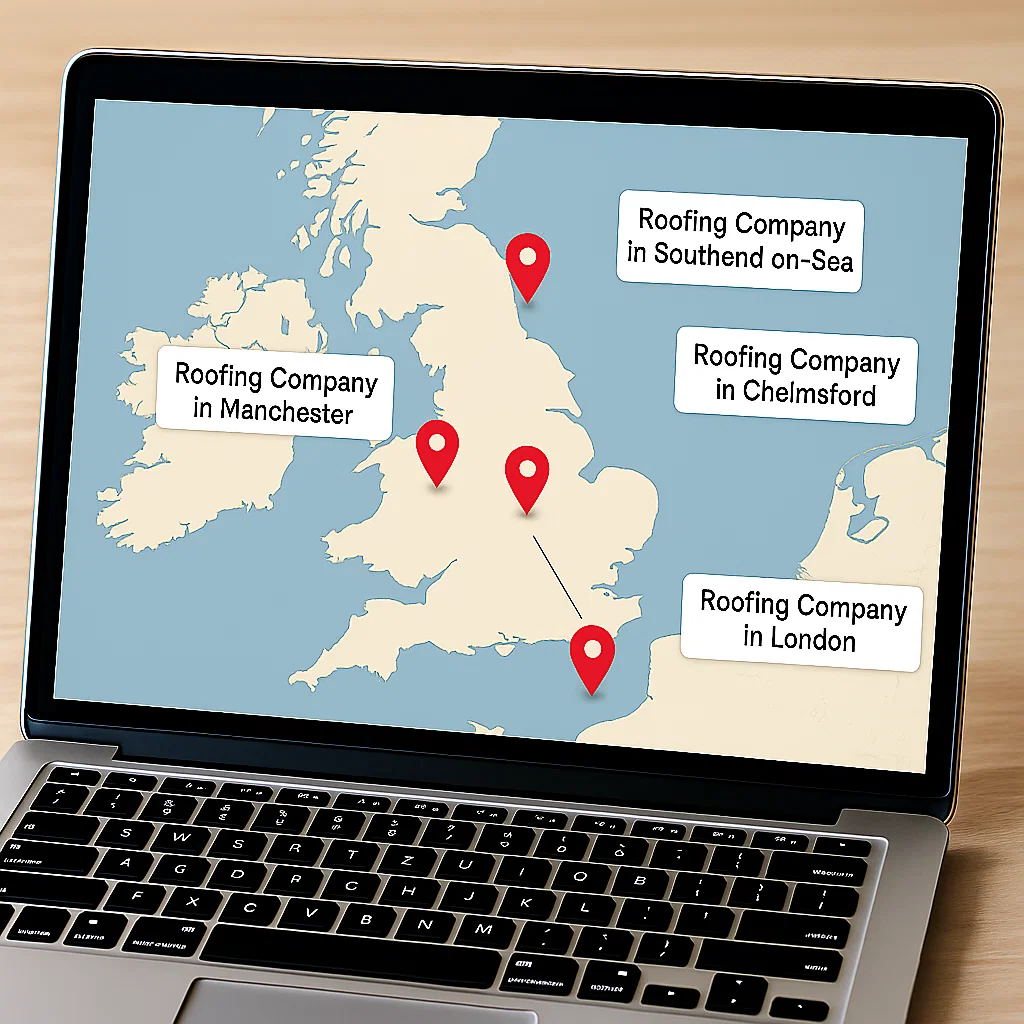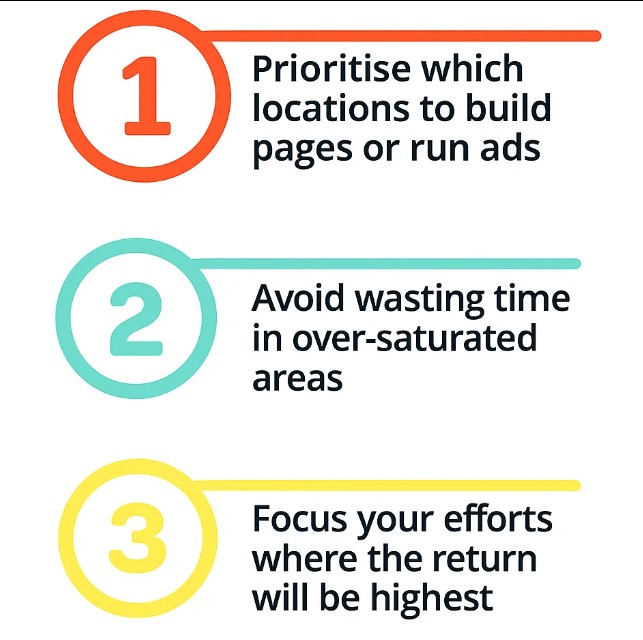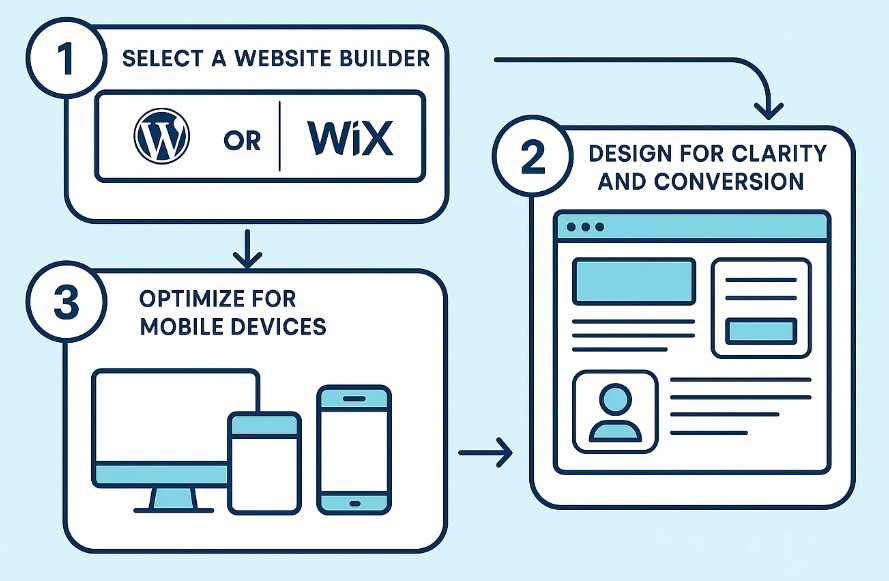
If you’re a local service provider—be it a roofer, plumber, or electrician—you might believe your customer base is confined to your immediate area. However, with a strategic approach, you can extend your reach across the entire country without incurring substantial costs.
In this guide, we’ll walk you through a straightforward marketing strategy that enables you to:
- Identify niche services with high demand and low competition.
- Create dedicated service pages targeting various regions.
- Generate leads from across the country.
- Expand your business without significant upfront investment.
Let’s delve into the step-by-step process to achieve this.
Step 1: Identify a Niche Service with Nationwide Demand

The first and most important step in building a nationwide lead generation strategy is choosing the right service to promote. Instead of trying to market every service you offer, the goal here is to narrow your focus to one specific service—or sub-service—that people are searching for across the country, but which isn’t already dominated by lots of big competitors.
This makes it easier, faster, and cheaper to rank your site on Google, run ads more cost-effectively, and win customers in multiple locations.
Why Focus on a Niche?
Marketing a niche service has three key benefits:
- Less competition – You’re not competing with every other business in your trade.
- More targeted messaging – You can tailor your website and ads specifically for this service.
- Better conversion rates – Customers searching for a specific service are often more ready to buy.
So how do you find the right niche service?
Use Keyword Research Tools to Find Opportunities
Start by heading to the Google Keyword Planner tool, which is available for free inside your Google Ads account. This tool helps you see:
- What people are searching for
- How many people are searching each month
- How competitive each keyword is (i.e., how many other businesses are targeting it)
- Suggested keyword ideas you might not have thought of
Example: Roofing Company
Let’s say you’re a roofer. You offer a broad range of services, including:
- Roof repairs
- Full installations
- Flat roofs
- Thatched roofs
- Slate roofs
- Pitched roofs
Now instead of trying to market all of these, you want to find the one with the best mix of high demand and low competition. Check the video below for each step:
Steps:
- Go to Google Keyword Planner
- Enter a broad term like “roofing”
- Set the location to the entire United Kingdom
- Click “Get Results”
You’ll get a list of keyword ideas along with:
- Monthly search volume
- Competition level
- Cost-per-click estimates (helpful for later if you decide to run ads)
What to Look For
- When evaluating potential niche services, there are three key factors to focus on. First, look for a search volume of at least 500 or more searches per month—this shows there’s enough demand to justify your effort.
- Next, pay attention to the competition level; ideally, you want to target services that have low to medium competition, meaning fewer businesses are actively bidding on or optimising for those keywords, which makes it easier and more affordable for you to rank.
- Finally, ensure there’s service relevance, which simply means choosing a service that you or your team can realistically offer. It’s no good targeting a high-demand niche if you’re not equipped to deliver the work. Balancing all three of these factors will help you choose a niche that’s profitable, sustainable, and easier to grow nationally.
Example Analysis
In our roofing example, let’s say we find:
- “Pitched roof” – 8,100 searches/month, low competition
- “Thatched roof repair” – 1,300 searches/month, medium competition
- “Flat roof installation” – 5,400 searches/month, high competition
In this case, “pitched roof” is a strong candidate because it:
- Has very high search volume
- Low competition
- Can be targeted in many different regions (e.g., Pitched Roof London, Pitched Roof Essex)
Also, pitched roofs are fairly common across the UK, and many roofing professionals can carry out this kind of work.
Step 2: Analyse Regional Demand and Competition

Now that you’ve chosen a niche service with good national demand, it’s time to zoom in on different cities, towns, and counties across the country to see where exactly this service is being searched the most—and how strong the competition is in those areas.
This step is all about identifying your best opportunities: locations where there’s a decent amount of people searching for your service, but not too many businesses already dominating the space. These “gaps in the market” are where you can step in and generate leads more easily.
Let’s break this down into a simple process.
Why This Step Matters
Just because a service has national demand doesn’t mean it’s equally popular in every area. For instance:
- Some counties might have more older properties, meaning services like roof repair or boiler replacement are in higher demand.
- Others may have newer housing estates, where services like loft insulation or EV charger installation are more common.
- In some areas, there might be very few local companies offering a specific service, making it easier for your business to rank and get leads.
By doing regional keyword analysis, you can:
- Prioritise which locations to build pages or run ads for
- Avoid wasting time in over-saturated areas
- Focus your efforts where the return will be highest
Step-by-Step: How to Check Regional Demand
1. Use Google Search
Let’s say your niche service is pitched roof repair.
Go to Google and search:
“Pitched roof repair [Location]” — for example:
- Pitched roof repair London
- Pitched roof repair Essex
- Pitched roof repair Birmingham
Now take a look at the results:
- Are companies running Google Ads for this keyword?
If yes, it usually means it’s a valuable keyword that brings in leads. - Are the top results local businesses or national directories?
If local companies dominate, it may be competitive. If directories (like Yell, Checkatrade, MyBuilder) are ranking, it could mean there’s a gap for you to fill with a proper service page. - Are there any companies with a dedicated service page for that keyword?
If yes, that shows businesses are investing in ranking for this specific service in that location—so there’s likely demand.
2. Look at Competitor Websites
Open a few of the top-ranking local business websites.
- Do they have dedicated pages for this exact service? (e.g., “Pitched Roof Repairs in Essex”)
- Do they have blog posts around related topics like “Common pitched roof problems” or “How much does it cost to repair a pitched roof?”
If yes, that’s a strong sign they are targeting inbound traffic from Google.
Also, take note of how well-built these websites are:
- Are they fast, mobile-friendly, and full of useful info?
- Or are they outdated and lacking clear call-to-actions?
If the competition is weak or average, you’ve found a good opportunity.
3. Use Google Keyword Planner Again (With Location Filters)
Open Google Keyword Planner, enter your service (e.g. pitched roof repair), and this time:
- Instead of choosing the whole UK, select a specific county or city
- Repeat this for a few key areas you’re interested in
This will show you:
- The monthly search volume for your niche service in that region
- Whether the competition level is high, medium, or low
- Suggestions for related local keywords
This method helps you identify areas with high enough demand but lower competition—ideal for launching your landing pages or Google Ads.
Example: Pitched Roof Services in London vs Essex
Let’s compare two locations:
London:
- Search term: “Pitched roof repair London”
- Monthly searches: 1,000+
- Competition: Medium to high
- Top results: Specialist roofing companies with strong websites
- Google Ads present? Yes
This shows that London has strong demand, but you’ll face decent competition. You’ll need well-optimised pages and possibly a bit more time to rank organically. However, Google Ads could still work well with the right setup.
Essex:
- Search term: “Pitched roof repair Essex”
- Monthly searches: 300–500
- Competition: Low
- Top results: A mix of directories and average local websites
- Google Ads present? Maybe one or two
Here, there’s still good demand but far less competition. This is a great location to target early with an optimised service page or ads.
Bonus Tip: Check Ads and Local Map Listings
When you do your local searches, also pay attention to:
- How many businesses show up in the Google Map Pack?
- Are their reviews and websites strong or lacking?
- Are there ads running for this location-specific search?
If no ads and only a couple of average businesses show up, that’s a golden opportunity. It means you can potentially dominate both organic search and local map rankings with relatively little effort.
Step 3: Secure a Relevant Domain Name
Once you’ve identified a niche service with national demand and analysed which regions to target, the next step is to secure a domain name that reflects your offer. Your domain is not just your web address—it’s the foundation of your online presence, and it plays a crucial role in brand perception, SEO, and trust.

For a local service business looking to grow nationally, the ideal domain should be:
- Easy to remember
- Clearly related to your niche
- Keyword-rich without sounding spammy
- Available with a reputable extension like .co.uk
For example, if you’re offering pitched roof repair services nationwide, a domain like pitchedroofservices.co.uk or pitchroofexperts.co.uk would instantly tell visitors (and Google) what your business is about. This helps build trust and credibility to support your organic rankings, especially when paired with strong on-page SEO.
Tips for Choosing a Good Domain Name
- Keep it short and specific: Avoid long or complicated names. The goal is to make it easy for people to type, remember, and share.
- Include your service in the domain: This helps both users and search engines understand what you offer.
- Use UK-relevant extensions: A .co.uk extension signals to Google that your business is targeting UK customers.
Step 4: Build a Dedicated Website for Your Niche Service

Now that you’ve secured your domain name, it’s time to build a dedicated website that focuses solely on your chosen niche service. This website will serve as your digital storefront, helping you attract organic traffic from across the country and convert that traffic into paying customers.
Unlike a general business website that lists every service under one roof, this niche-specific site is streamlined and targeted. Its entire structure, content, and messaging are focused on one core offering, which not only improves SEO but also builds trust and authority with potential clients.
Why a Dedicated Website Works
Search engines like Google reward relevance and depth. When your entire website revolves around one service—whether it’s pitched roof repair, boiler inspections, or emergency plumbing—it sends a strong signal that you’re an expert in that field. This can help you outrank larger, more general competitors who mention your service only briefly.
It also makes it easier to build location-specific landing pages (which we’ll cover next), write blog posts tailored to that service, and create high-converting service descriptions.
Here is What You Need To Do
- Select a Website Builder: Utilize user-friendly platforms like Wix, Squarespace, or WordPress.
- Design for Clarity and Conversion: Ensure your website clearly communicates your services. Include call-to-action buttons, contact forms, and testimonials to encourage conversions.
- Optimize for Mobile Devices: With a significant portion of users browsing on mobile, ensure your site is responsive and loads quickly.
A dedicated website positions you as a specialist in your niche, enhancing trust and attracting more clients.
Step 5: Create Location-Specific Service Pages
Once your niche website is set up, the next step is to build dedicated service pages targeting specific towns, cities, or counties across the country. These pages are crucial if you want to rank on Google when someone searches for your service in a particular area, even if you’re not physically based there.
Why Location Pages Work

When people search for a service online, they usually include their location in the query—such as “pitched roof repair in Birmingham” or “boiler installation Essex.” Google aims to show results that are locally relevant, so having a page specifically tailored to that location significantly increases your chances of appearing on the first page.
Each location page you create acts like a mini landing page for that region, helping your website build a national footprint and pull in leads from across the UK.
What to Include on a Location Page
Each location-specific page should be unique and optimised with relevant keywords. Here’s what a strong page might include:
- Page Title & Meta Description with the service + location (e.g. Pitched Roof Repairs in Essex).
- Intro Paragraph explaining that you offer this specific service in that area.
- Details of the Service tailored to the needs of that location (mention local roofing styles or materials if possible).
- Case Studies or Reviews from nearby areas, if available.
- FAQs that address common concerns from customers in that location.
- Clear Call to Action to encourage visitors to enquire or call.
Avoid duplicating content across pages—rewrite each one with slight variations to stay SEO-friendly. Over time, as you build out 10, 20, or even 50 local pages, you create a nationwide network of search-optimised entry points, drawing in traffic and enquiries from across the country.
Step 6: Implement Google Ads for Immediate Visibility

Now that you’ve chosen your niche, identified the best locations, and built dedicated service pages, the next step is to supercharge your visibility with Google Ads.
While SEO is fantastic for long-term growth, Google Ads offer an immediate way to start generating leads, driving traffic to your service pages, and positioning your business in front of potential customers right away. The best part? You can target specific locations, times of day, and even specific devices to optimise your ad spend and maximise your results.
This step is all about getting your business in front of people who are actively searching for services like yours—before they even find your organic listing.
Let’s break this process down into clear steps.
Why Google Ads Matter
With Google Ads, you are essentially paying to appear at the top of search results, ensuring your business gets immediate exposure when potential customers search for your services.
You’ve already done the hard work of researching niche services and local demand, so now it’s time to use Google Ads to drive traffic to your newly built service pages.
This is an excellent way to ensure you’re visible in high-demand areas where organic search might take time to rank. Plus, Google Ads allow you to refine your targeting to attract the exact kind of customers you want, based on their:
- Location
- Search intent
- Device type
This means you can target local customers looking for pitched roof repair in Essex or boiler installation in Birmingham, driving leads with minimal waiting time.
Step-by-Step: How to Set Up Google Ads for Local Services
1. Set Up Your Google Ads Account
First things first, you need a Google Ads account. If you haven’t already done so, head over to the Google Ads platform and sign up. It’s a straightforward process, and Google will guide you through the setup.
Once you’re logged in, click on “+ New Campaign” and select your campaign goal. For local services, we recommend choosing:
- “Leads” if your goal is to generate customer inquiries or bookings
- “Website traffic” if you just want to drive traffic to your landing pages (though leads are generally the primary goal)
2. Choose the Right Campaign Type
Google Ads offers different types of campaigns, but for local services, the best options are:
- Search Campaigns: This is when your ad appears in Google’s search results when people search for keywords relevant to your services (e.g., “pitched roof repair London”).
For local businesses, Search Network Campaigns are often the best choice. This allows you to target specific areas and select keywords related to the services you offer.
3. Select Target Locations and Keywords
Location Targeting:
One of the greatest benefits of Google Ads is the ability to target specific locations. When setting up your campaign, you can:
- Target a specific city, county, or even radius around a particular address
- Use location bid adjustments to increase bids in high-performing areas
Keyword Targeting:
Once you’ve identified your high-demand, low-competition keywords from your research, it’s time to plug those into your campaign. These should align directly with the service pages you’ve created.
For example:
- Pitched roof repair Essex
- Roof replacement London
- Boiler installation Manchester
Choose keywords that are:
- Highly relevant to the service you provide
- Have decent search volume in your target location
- Have a manageable competition level (if too many competitors are bidding on the keyword, the cost-per-click (CPC) can become too expensive)
Tip: Start with exact match and phrase match keywords to control your ad spend. Broad match keywords can sometimes waste your budget by showing ads for irrelevant searches.
4. Write Compelling Ad Copy
Now it’s time to create your ad copy. Your ad needs to be:
- Clear: Let people know what service you offer, and why they should choose you.
- Relevant: Tailor your ad text to match the specific keyword people are searching for. If someone searches for pitched roof repair London, your ad should mention pitched roof repair and London.
- Actionable: Include a call-to-action (CTA) like “Get a Free Quote” or “Contact Us Today”.
Make sure to create multiple ad variations to test which works best (known as A/B testing).
5. Set Your Budget and Bidding Strategy
Set Your Daily Budget:
Decide how much you want to spend each day on ads. Start small, especially if you’re new to Google Ads, and then increase your budget as you see results.
Choose a Bidding Strategy:
Google Ads offers various bidding strategies, but for lead generation, you’ll typically want to use:
- Maximise Conversions: This will let Google automatically adjust your bids to get the most conversions (e.g., phone calls or form submissions) within your budget.
- Manual CPC (Cost-Per-Click): This allows you to set your own maximum bid for each click, which gives you more control over your ad spend.
As you collect more data on your campaign’s performance, you can experiment with different bidding strategies.
6. Monitor Your Ads and Optimise Performance
Once your ads are live, you’ll want to track their performance. Google Ads offers a variety of reports and tools to see how your ads are performing, including:
- Impressions: How many times your ad has been shown.
- Clicks: How many people clicked your ad.
- Click-Through Rate (CTR): The percentage of people who clicked on your ad after seeing it.
- Conversion Rate: The percentage of people who completed a desired action (e.g., filled out a form or called your business).
Use this data to refine your campaigns. If certain keywords or locations are bringing in more leads, you can increase bids or expand your targeting. If some keywords are underperforming, you can pause them or try new variations.
Step 7: Establish Partnerships with Local Contractors

To fulfill services in regions beyond your immediate reach, collaborate with local contractors.
- Identify Potential Partners:
- Reach out to reputable contractors in target regions who can deliver services on your behalf.
- Define Partnership Terms:
- Establish clear agreements regarding service standards, pricing, and lead handling.
- Maintain Quality Control:
- Regularly review the performance of partners to ensure consistent service quality.
These partnerships enable you to offer nationwide services without the need to expand your physical operations.
Step 8: Expand to Other Niche Services
Once your initial niche service is established, consider replicating the strategy for other services.
- Research Additional Niches:
- Use tools like Google Keyword Planner to identify other services with high demand and low competition.
- Develop Dedicated Websites:
- Create separate websites for each new niche service to maintain focus and clarity.
- Repeat the Process:
- Implement the same steps: analyze regional demand, build location-specific pages, run targeted ads, and establish local partnerships.
This approach allows you to systematically grow your business across various services and regions.
Conclusion
Expanding your local service business to a nationwide audience is achievable with a strategic approach. By identifying niche services with high demand and low competition, creating dedicated websites with location-specific pages, leveraging Google Ads, and partnering with local contractors, you can attract customers from across the country without significant investment.
Implement these steps diligently, and you’ll position your business for sustained growth and success.
